Woodlock House (Portlaw)
Houses within 10km of this house
Displaying 45 houses.
Houses within 10km of Woodlock House (Portlaw)
Displaying 45 houses.
| House name | Description | |
|---|---|---|
| Carrick House | The sale rental of 1851 records Walter Herbert holding the mansion house and demesne on a renewal lease dated 1796. This house no longer exists. | |
| Tinvane | This house was the home of the Briscoe family in the 19th century. In 1841 The Ordnance Survey Name Books described it as "handsomely situated...having plantations, gardens, orchard and ornamental grounds". Henry Briscoe was the occupier at the time of Griffith's Valuation when the buildings were valued at £26 and in the 1870s Henry W. Briscoe of Tinvane owned 127 acres. The property was held from the Earl of Bessborough. Now function as a guest house known as Cedarfield House. For an older image of this house, see http://www.waterfordcountyimages.org/exhibit/web/DisplayWAIImage/K0fV5VPbSPSwE/ |

|
| Villa Mantilla Verda | On the outskirts of the town of Carrick on Suir, this house was occupied by Mrs Sophia Manderville in the mid 19th century. She held it from Walter Herbert [nephew of Dorothea Herbert] and the buildings were valued at £16.11 shillings. | |
| Carrick Castle | A 16th century house built by the 10th Earl of Ormonde, which was abandoned by the family in the 18th century. Lewis wrote in 1837 “The castle is still a stately building although much of it is in ruins; it was for many years the residence of the Ormonde family, and part of it has been converted into a private residence”. At the time of Griffith's Valuation it was vacant and valued at £19. Taken over by the Office of Public Works in the 20th century and restored as a national monument. Now functions as a museum. |
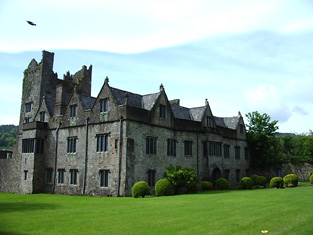
|
| Mayfield or Rocket's Castle | The property at Rocketscastle was held in fee by Rev. John T. Medlicott at the time of Griffith's Valuation, when it was valued at £36. In 1906 he was still the owner of the property then valued at £30 10s. Morris states that this property was originally part of the May estate and known as Mayfield . Smith, writing in 1774, refers to Mayfield as "the pleasant seat of Sir James May, formerly called Rockett's Castle" and Wilson also mentions it as his residence in 1786. The original Rockett's Castle was in ruins by the time of the 1st Ordnance Survey and this house was built after that on an adjacent site. The 1943 ITA survey, indicates that the Medlicotts had adapted the old castle building as an engine house at that time. A house is still extant at the site. | |
| Knockane House | In 1850 Thomas Rockett was leasing a property valued at almost £9 from the Medlicott estate.This house had been constructed after the appearance of the 1st edition Ordnance Survey map in 1840. A second adjacent property was leased by James Rockett and valued at almost £8. There is still an extant house at the site. | |
| Springfield (Portlaw) | Robert Shaw was leasing this property from the Medlicott estate in 1850 when it was valued at £39. He was the director of some of the industrial enterprises in Portlaw. Springfield is still extant and occupied. |
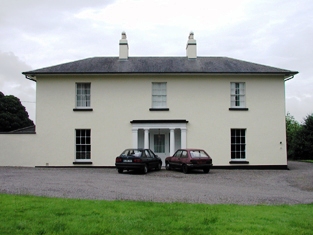
|
| Mayfield (Portlaw) | Mayfield was held by William Malcolmson from the Medlicott estate at the time of Griffith's Valuation, when it was valued at £50. Lewis refers to it as the seat of J. Malcolmson in 1837. In 1906 it was the property of William Malcomson and valued at £31. It is now a ruin. |
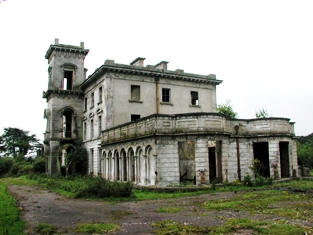
|
| Woodview House (Portlaw) | Dr. James Martin, MD, was leasing this property from the Malcolmson family at the time of Griffith's Valuation, when it was valued at £25. It is still extant and occupied. |
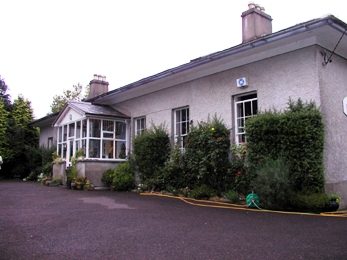
|
| Milfort/Milford House (Portlaw) | Milfort House was another property held by the Malcomson family in Portlaw. It was part of a complex designed by the well-known architect John Skipton Mullvaney. Milfort was demolished in the mid-twentieth century but some estate architecture survives. |
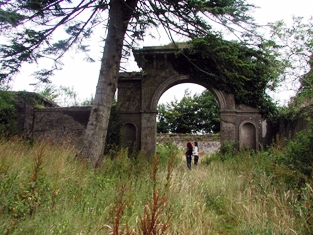
|
| Mountbolton | Pierce Henebery was leasing this property from Jane Bolton at the time of Griffith's Valuation, when it was valued at £12 15s. In 1786 Wilson states that Mount Bolton was the seat of John Bolton. The original house was not extant by the time the 25-inch Ordnance Survey map was published in the 1890s and the site is now occupied by farm buildings. | |
| Rath (Fenoagh) | In 1850 Jane Bolton was leasing this property to Anne Power when it was valued at £12 15s. A farm still exists at the site. | |
| Curraghmore | The house at Curraghmore is centred on the old medieval tower house of the Le Poer family to which various additions and renovations have been added. Both Smith, writing in 1774 and Wilson, writing in 1786, offer detailed contemporary descriptions of the house and demesne . At the time of Griffith's Valuation, it was valued at £210. In 1906 it was valued at £200. The 1943 ITA survey describes it in detail, stating that it was one of the finest properties in Munster, if not in all of Ireland. It is still extant and occupied by the Le Poer Beresford family. See www.curraghmorehouse.ie for more information. |

|
| Guilcagh House | At the time of Griffith's Valuation, Guilcagh was held in fee by the Beresford estate and valued at £17 10s. In 1906 it was still part of Lord Waterford's estate and valued at £16. It is no longer extant. | |
| Whitestown | Described as a huntsman's house in Griffith's Valuation in 1850, Whitestown was then valued at £14. In 1906 it was still part of Lord Waterford's estate and valued at £11. It is no longer extant. | |
| Milford House | In 1850, Mrs. Anne O'Brien was leasing this property from the Medlicott estate when it was valued at £10 15s. Morris refers to a Rogers family "of Coolroe" in the mid eighteenth century. This house is no longer extant. | |
| Ballyvallikin | In 1850 this property was being leased by John and Margaret Fitzgerald from Lord Waterford's estate when it was valued at £11. It was still part of the Waterford estate in 1906 and valued at £11 5s. Extensive farm buildings still exist at the site. | |
| Glen House (Kilmeaden) | Thomas Flahavan was leasing Glen House from Lord Waterford's estate in 1850 when it was valued at £11 10s. A house is still extant at the site. | |
| Laherdan House | In 1850, John Whelan was leasing this property from the Beresford estate when it was valued at £11 10s. It is labelled Laherdan House on the 25-inch Ordnance survey map of the 1890s. A house is still extant at the site. | |
| Ballydurn | Ballydurn was leased by George Moore from the Beresford estate in 1850 when it was valued at £10. An extensive farm exists at this site. [Grid Reference is approximate] | |
| Ballyknock | A house valued at £12 10s which was vacant at the time of Griffith's Valuation . Probably in the possession of Thomas Dooley who was leasing property from the Beresford estate in the area. There is no house visible on the later 25-inch map of the 1890s. | |
| Ballyneal House | Ballyneal was held from the Waterford estate by William Shanahan (David) at the time of Griffith's Valuation, when it was valued at £14 10s. A second house in the townland, leased by William Shanahan (John) was valued at £12 10s [S373150] There is still a house extant at this site. | |
| Ballynevin | James Moore was leasing two properties from Lord Waterford at Ballynevin at the time of Griffith's Valuation. One was valued at £22 and the second [S399178] at £10 10s. Substantial farms still exist at both sites. | |
| Bishopstown (Upperthird) | At the time of Griffith's Valuation, Catherine Hally was leasing this property, valued at £11, from the Trustees of Waterford College. Modern buildings exist at the site now. | |
| Clonea Mill | In 1850 Judith Ryan was leasing this property from the estate of Sir Benjamin Morris Wall, when it was valued at £21, including a mill. It is labelled Corn Mill on the 1st edition Ordnance Survey map but is not marked on the 25-inch map of the 1890s. | |
| Glenstown | Leased by Johanna Cormack from Lord Waterford's estate in 1850 when it was valued at almost £14. A farm exists at the site now. | |
| Kilcanavee | In 1850 William Hunt was leasing this property from Lord Waterford's estate when it was valued at £13. A farm exists at the site now. | |
| Oldgrange House | Nicholas O'Neill Power was leasing this property to James Quinn at the time of Griffith's Valuation, when it was valued at £9. Buildings are still extant at the site. | |
| Whitestown | In 1850,Lord Waterford held a property described as a "huntsman's house" in fee at Whitestown. It was valued at £14. Substantial kennels are shown nearby on the 25-inch Ordnance Survey map of the 1890s and this building is still extant. | |
| Whitestown House | David Shanahan was leasing Whitestown House from the Marquis of Waterford's estate in 1850 when it was valued at 16 10s. The original house is now derelict. This may be the property to which Wilson refers in 1786 when he notes it as seat of Mr. Ducket. | |
| Carriganore House | John Strangeman was leasing this property from the Corporation of Waterford in 1850 when it was valued at £22. It now forms part of the Western Campus of Waterford Institute of Technology. |
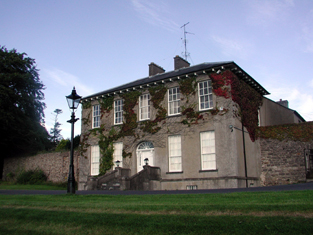
|
| Killoteran House | William Scully was leasing this property from Edward Roberts in 1850 when it was valued at £34. It is still extant and occupied. |
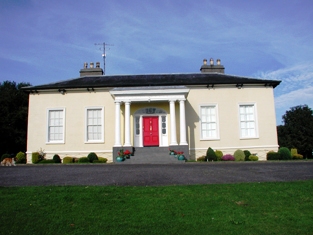
|
| Wood House (Woodville) | Thomas McGrath was leasing a house and mill from William Christmas at the time of Griffith's Valuation when the two properties had a valuation of £23. This house is labelled Woodvilla on the 1st edition Ordnance Survey Map but Wood House on the later 25-inch edition. A house is still extant at the site. The mill buildings are described as "in ruins" on the 1st edition Ordnance Survey map. | |
| Cullenagh (KIlmeadan) | Mrs. Margaret Gamble was leasing this property from Viscount Doneraile's estate in 1850 when it was valued at £11 15s. A house is still extant at the site. |

|
| Fairbrook House | At the time of Griffith's Valuation, Patrick Stephenson was leasing an extensive mill complex from Thomas Gamble at this location. It is described as Fairvew Paper Mill on the 1st edition Ordnance Survey Map and as Fairbrook Factory on the later 25-inch edition. The house and mill had a combined value of £95. The buildings are still extant. |
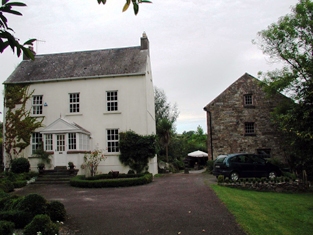
|
| The Pines (Darrigal) | Alexander Sherlock was leasing this property to Michael Nowlan in 1850 when it was valued at £13 10s. It appears to have become known as The PInes by the end of the nineteenth century. Recorded as the seat of Patrick Power by Leet in 1814. There is still a house at this site. | |
| Whitfield Court | In 1850 William Christmas held Whitfield in fee when it was valued at £49. The National Inventory of Architectural Heritage indicates the house was built by him between 1820-1849, replacing an earlier house. Local sources indicate that this earlier house was in the townland of Whitfield and the name was transferred to the existing house when it was built in the adjacent townland of Dooneen. Leet records the earlier property as the seat of Thomas Christmas in 1814. Smith, writing in 1774, mentions the house as "an elegent seat belonging to Thomas Christmas, formerly a Dobbyn castle". In 1786 Wilson refers to Whitfield as the seat of William Christmas. The nineteenth century house is still extant but no longer occupied. |
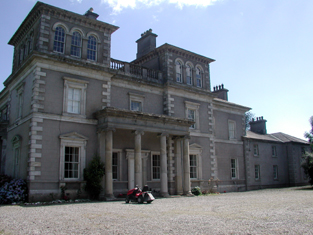
|
| Pouldrew House | In 1850 Edward Eakers was leasing this property from the Malcolmson estate. The property included part of an extensive mill complex, valued at over £36. It is still extant and occupied. |
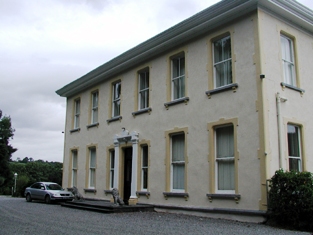
|
| Pouldrew Mill | This property is closely connected with Pouldrew House nearby. In 1850 it was leased by Edward Eakers from the Malcolmson estate and valued at £95. The mill was demolished in the twentieth century. | |
| Mount Congreve | Built and owned by the Congreve family from the mid-eighteenth century. Wilson states that it was "the pleasant seat of John Congreve" in 1786. Leet refers to it as the seat of Captain Fleming in 1814. At the time of Griffith's Valuation, in 1850, Mount Congreve was held in fee by John Congreve, when it was valued at £68 10s. It is still extant though a sale of the house contents took place on the premises in July 2012. |
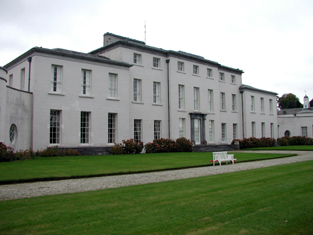
|
| Knockaderry House | The National Inventory of Architectural Heritage notes Knockaderry as a mid eigtheenth century house. Maurice Ronayne was leasing this property from Viscount Doneraile's estate at the time of Griffith's Valuation, when it was valued at £17. It had fallen into disrepair by the beginning of the twenty-first century. |

|
| Ballyduff House (Kilmeadan) | In October 1851, the sale notice for Henry Langley's property at Kilmeadan noted that the demesne at Ballyduff was well planted and the house at a little cost could be put into excellent order. The tenant at the time was John Sadlier, MP. At the time of Griffith's Valuation it had been occupied by John William Langley leasing from Henry Langley and was valued at £9. There is still an occupied house at Ballyduff. | |
| Stonehouse | In 1814 Leet records Stonehouse as the residence of Patrick Duckett. This may be the same property leased by Joseph Power from Osborne Boyce at the time of Grifith's Valuation and valued at £9. The original property does not appear to be extant. | |
| Knockane Lodge | Hussey de Burgh cites Knockane Lodge as the address of William H.F. Bosanquet in the 1870s. This may the second house noted in the townland of Knockane at the time of Griffith's Valuation, which was being leased by the Rockett family. | |
| Amberhill House | Wilson, writing in 1786, refers to Amber Hill as the seat of Stephen Worthvale. By the time of Griffith's Valuation, this townland was part of the St. Leger estate and Amberhill was occupied by Stephen Gamble when the buildings were valued at over £8. A farm is still extant at the site. |

